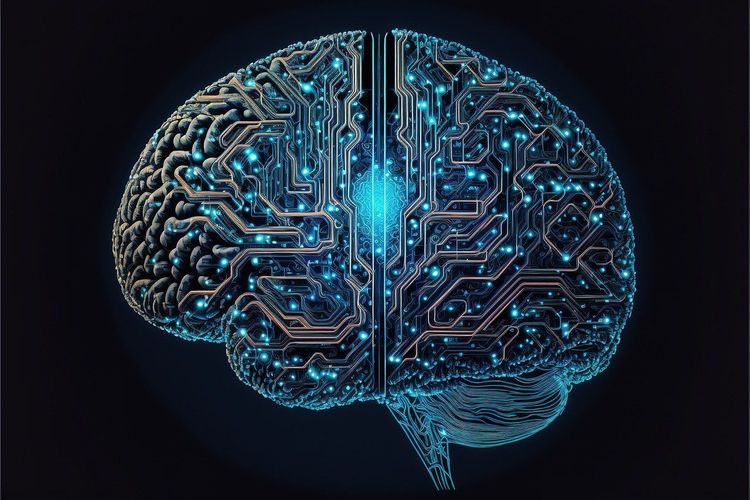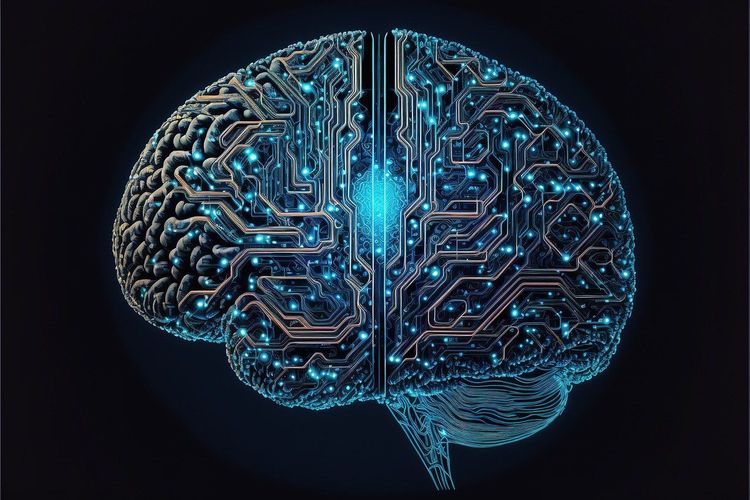This week brought exciting developments in the AI community, as Apple entered the competition alongside Google, OpenAI, Anthropic, Meta, and others, in the quest to create an icon that effectively represents AI to users. Like its competitors, Apple has opted for ambiguity.
Apple Intelligence is embodied by a circular design featuring seven loops. Or is it a circular shape with a tilted infinity symbol? No, that’s New Siri, equipped with Apple Intelligence. Or is it the instance when your phone glows around the edges? Yes.
The reality is, no one truly understands what AI looks like or how it should be visually represented. It engages in numerous activities but has no concrete form. Nonetheless, it is essential to symbolize it in user interfaces to distinguish between interactions with a machine learning model and regular tasks like searching or submitting information.
While branding strategies vary for this supposedly omniscient intelligence, many converge on the notion that AI avatars should be abstract, friendly, and straightforward—rejecting anthropomorphic representations. (They overlooked my idea of having these models communicate exclusively in rhyme.)
Early representations of AI included whimsical elements like robots, wizard hats, or magic wands. However, the robot imagery often conveys a sense of inhumanity and limitation—robots are not personal, they follow predefined tasks. Meanwhile, wizard hats and similar items evoke irrationality and mystery, which can work for creative applications but not for the factual, reliable responses these companies aim to deliver.
Corporate logo creation is often a blend of bold vision, commercial needs, and committee compromises. You can observe these influences in the logos presented.
OpenAI opts for the most striking vision with its black dot—a cold, featureless void symbolizing your queries, reminiscent of a wishing well or Echo's cave. Microsoft’s Copilot logo, driven by committee influence, is surprisingly difficult to describe.
Notice how four out of six logos (or five out of seven if Apple is accounted for twice) feature cheerful, candy-like colors. These hues resonate with positivity but lack defining meaning, often leaning towards softer, more feminine or childlike aesthetics.
We see soft gradients in pink, purple, and turquoise alongside pastels rather than bold colors. Four logos embrace soft, fluid shapes, while Perplexity and Google utilize sharper edges—the former resembling an infinite book, and the latter presenting a harmonious, welcoming star. Some designs even incorporate animations to evoke a sense of life and responsiveness, ensuring they capture attention (looking at you, Meta).
Overall, these designs intend to convey friendliness and openness, focusing on undefined potential rather than qualities like expertise, efficiency, or creativity.
Think I'm reading too much into this? Consider the lengthy design treatment documents for each logo—I'd wager most exceed 20 pages. Companies obsess over these details, sometimes missing glaring errors or unintentional vibes in their designs.
Slack’s latest logo is a testament to this phenomenon.
However, the crux of the matter is that no design has yet successfully conveyed a clear visual identity synonymous with "AI." These colorful shapes merely imply one negative aspect—they signify that this interface is neither email, a search engine, nor a notes application.
Consider email icons typically represented by envelopes—they signify electronic mail both conceptually and practically. The general “send” icon for messages resembles a paper plane, indicating movement. Settings icons like gears or wrenches suggest tinkering with machines. These concepts resonate across languages and cultures.
Not every icon can express its function clearly. Take “download,” which varies by culture; in France, the action is "télécharger," making sense but diverging from "download." Thus, we adopt a downward-pointing arrow, symbolizing “loading.” Similarly, cloud computing emerged as a marketing term for a data center, leaving us to wonder what else we could have called it—a "tiny datacenter" button?
AI is still a novel concept for consumers who are encouraged to use it to replace "traditional tools," a vague category that AI proponents are hesitant to define. Doing so would imply limitations of AI capabilities. Acknowledging this remains uncomfortable, as it contradicts the narrative that anything is possible with AI—it's merely a question of engineering and computing power.
To paraphrase Steinbeck: every AI perceives itself as a temporarily embarrassed AGI, or so its marketing teams would have you believe.
In the meantime, these companies must give AI a name and a “face”—ironically, none settled on an actual face. They instead cater to consumer whims, who often overlook version numbers, favoring names like ChatGPT; they associate "Bard" but accept the well-tested "Gemini"; and while “Bing” may not have been appealing, the concept of having a "Copilot" resonates.
Apple has adopted a multifaceted approach: users query Apple Intelligence using Siri (two distinct logos), which operates within the "Private Cloud Compute" (distinct from iCloud) or possibly forwards requests to ChatGPT (no logo allowed). The only visual cue that AI is engaging with you is... a swirl of colors, appearing somewhere or everywhere on-screen.
Until AI is more clearly defined, we can expect its icons and logos to remain vague, inviting, and abstract. After all, a colorful, ever-changing blob doesn’t seem threatening, does it?







